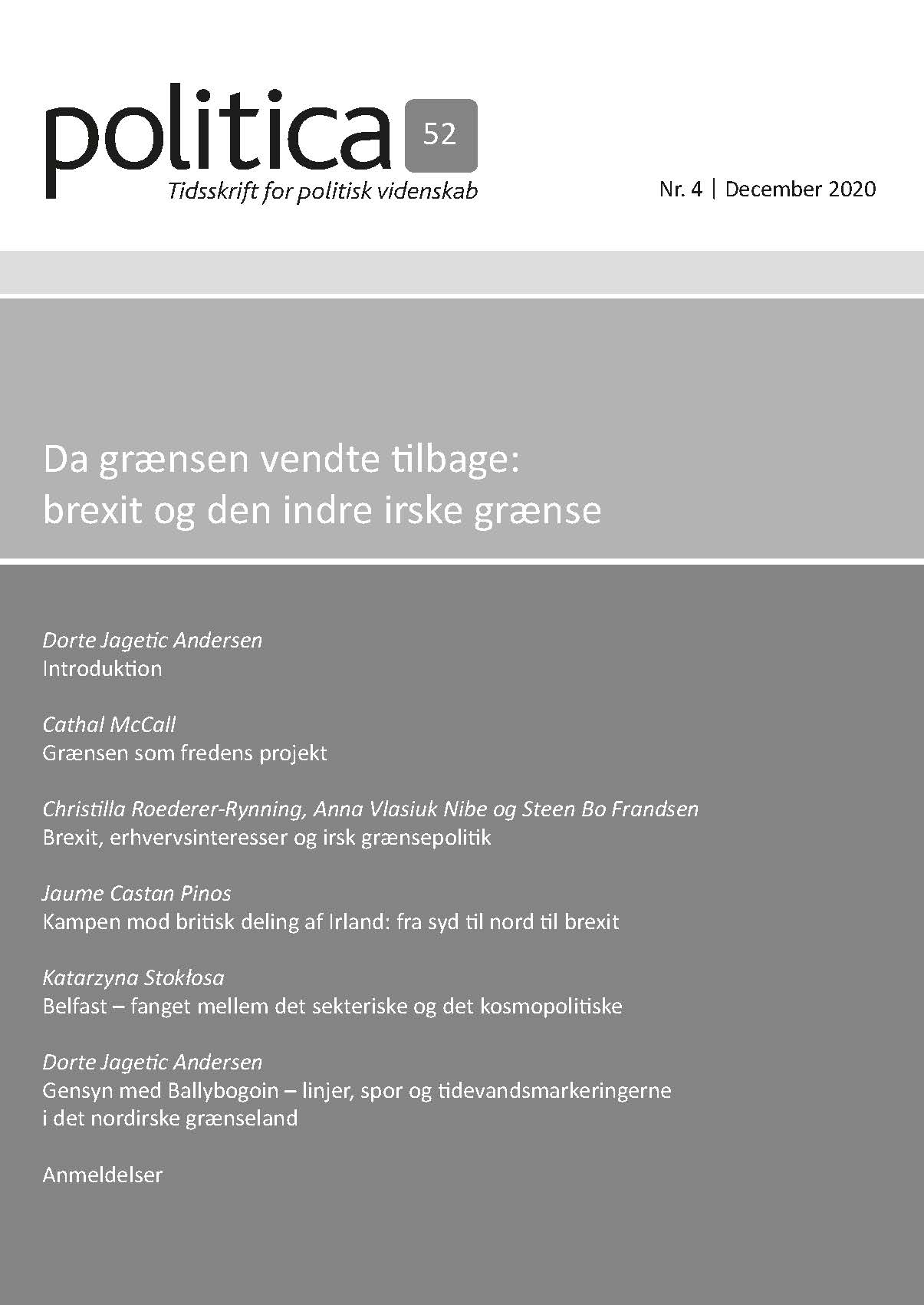Revisiting Ballybogoin: Lines, traces and tidemarks in the Northern Irish borderlands
DOI:
https://doi.org/10.7146/politica.v52i4.130839Nøgleord:
(London)Derry, lines, traces, tidemarks, storytelling, Northern Irish BorderlandsResumé
The article departs from William F. Kelleher book (2003), The Troubles in Ballybogoin, investigating how everyday practice in the Northern Irish borderland – ranging from whom people interact with to where they move – is influenced by the social memory of division and political identity, with origins in the Troubles and the British imperial legacy. In dialogue with Sarah Green’s concepts of lines as traces and tidemarks (2018) and by way of field studies in the borderlands, particularly the border town (London)Derry, the author revisits the everyday practices to illustrate how the borderland is infested with lines parting ”the two sides of the house.” Michel de Certeau’s concept of spatial practice, also applied by Kelleher, makes the divisions physically present in the town scape – as the case is in Belfast – and the local tradition of “telling” keeps the divisions alive in stories and other mental images. The borderlandscapes are thus haunted by the ever-present mapping of the populations in us/them, either/or, here/not there, a mapping of people, which is also constantly brought into being by local talk.
Publiceret
Citation/Eksport
Nummer
Sektion
Licens
LicensOphavsretten tilhører Politica. Materialet må ikke bruges eller distribueres i kommercielt øjemed.





